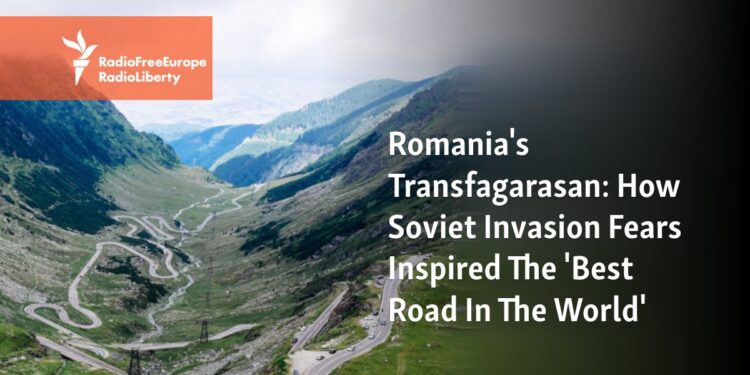The Fagaras Mountains form a vast natural barrier between southern Romania and the country’s Transylvania region.
Any Soviet ground invasion could come from the north, where the U.S.S.R.’s border curled around Romania. Ceausescu decided it was imperative to cut a road directly through the Fagaras Mountains, which divide Romania’s well-populated south from rural Transylvania.
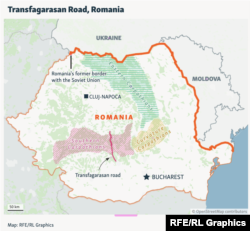
Such a route, it was calculated, would enable an armored division of around 2,000 vehicles to deploy north into the mountain-ringed Transylvania region within 24 hours of a Soviet attack.
The idea of the Transfagarasan road was born.
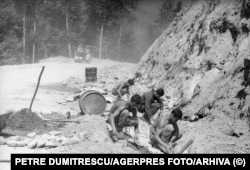
A crew works on the Transfagarasan in the summer of 1971.
Retired Romanian Army Colonel Ion Bratu confirmed to RFE/RL that the “trigger” for the construction of the Transfagarasan road was the invasion of Czechoslovakia. Bratu is now 76 and remembers well his time commanding a crew of 175 soldiers who toiled in the Fagaras Mountains 50 years ago.
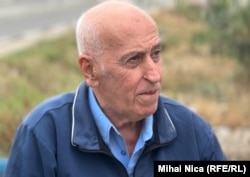
Retired Colonel Ion Bratu
Building the route was a monumental task. The Fagaras Mountains are the highest range in Romania’s Southern Carpathians, whose peaks tower more than 2,500 meters above the lowlands.
“It was very tough,” Bratu remembers. “The biggest enemy was the cold and the instant changes in the weather.”
On top of the physical hardships were “wild animals, especially bears and wolves,” he said.
Additionally, many young soldiers struggled with long periods in the alpine wilderness away from loved ones. “On Sundays, I would see wives or girlfriends of the guys come up to see them. They would hug, kiss, and cry together,” Bratu says.
The pay, however, was handsome.
“Everyone who worked on the Transfagarasan — from soldiers to generals, from technicians to researchers — was well compensated,” Bratu says. Some workers earned five times the country’s average salary at the time.
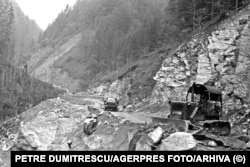
A section of the Transfagarasan photographed during its construction in 1971
The task to build the road fell largely to young soldiers, while miners were brought in to blast tunnels through the mountains.
The number of deaths on the project through its years of construction from 1970 until 1974 is disputed. Official records say 40 workers died, others believe the number was far higher. In a single incident in July 1970, seven soldiers were killed in a tumble of rocks and rainwater as they took shelter from a summer storm.
The harshness and urgency of the work were captured in one story told by a former soldier who described seeing a bulldozer get squashed “like a fly” under a rock that crashed down the mountain and landed flush on the vehicle. By the time the rock was blasted out of the way with explosives, the flattened remains of the bulldozer had sunk so far beneath the level of the road that workers simply filled in the hole with the flattened bulldozer still inside.
The entombed machine “remains there to this day,” the retired soldier said, unseen beneath the road’s surface.
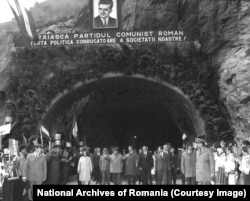
Nicolae and Elena Ceausescu attend the official opening of the Transfagarasan on September 20, 1974. The propaganda banner declares: “Long live the Communist Party, the leading political force in our society.”
When Ceausescu visited the road during its construction in 1971, he ordered it be upgraded from a gravel road to a two-lane sealed route to encourage tourism into the mountains.
“This type of decision was typical of Ceausescu,” journalist Lavinia Betea told a Romanian documentary crew in 2015. “During visits to worksites, or in front of models made by designers for future projects, he imposed major changes, and it was left to the specialists to find a way to realize what he had suggested.”
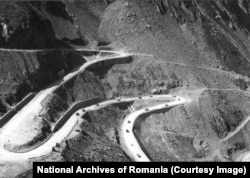
The Transfagarasan road photographed shortly after its September 1974 opening
The road was officially opened on September 20, 1974, though further construction continued for several more years.
The route’s cloud-slicing altitude means it is closed from autumn through to early summer, but it has become a massive tourist draw through warmer months.
Its popularity is in part due to a dramatic 2009 television appearance. In November of that year, 6.7 million British viewers tuned in as the automotive show Top Gear screened a tire-screeching sequence in which the presenters sped along the Transfagarasan in three supercars.
At the climax of the scene, the show’s main host, Jeremy Clarkson, declared, “This is the best road in the world.”
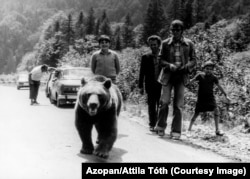
Tourists with a wild bear on the Transfagarasan in the 1970s
About the soldiers and workers who built the road, one military journalist said “they worked and sacrificed with real conviction. They were enthusiastic about this project, not for communism or Ceausescu, but because they realized the significance of what they were a part of.”
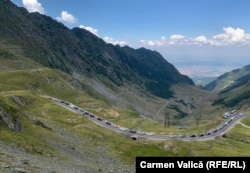
Lines of cars on the Transfagarasan in August 2022
For Bratu, those grueling years working in the mountains appear to remain a cherished memory.
Building the Transfagaran was, he said, “an adventure, a life experience,” adding that “youth and enthusiasm overcome any amount of hardship.”
Source link : https://www.rferl.org/a/romania-transfagarasan-road-50th-anniversary/33125063.html
Author :
Publish date : 2024-09-19 07:00:00
Copyright for syndicated content belongs to the linked Source.

